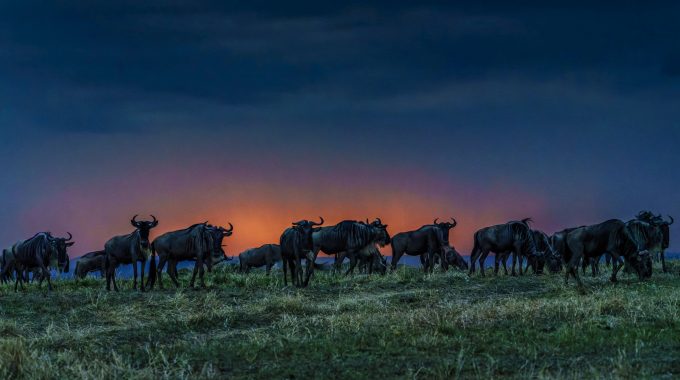What female animal is pregnant the longest? - The female animal with the longest pregnancy…
Which country has the best wildlife in East Africa?
Which country has the best wildlife in East Africa? Determining which East African country has the “best” wildlife depends on what you’re looking for in a safari experience. However, in terms of overall diversity, iconic species, and unforgettable wildlife encounters, Tanzania and Kenya are generally considered to have the richest and most varied wildlife offerings in East Africa. Here’s why:

Tanzania:
Why it stands out:
- Serengeti National Park: The Serengeti is synonymous with wildlife in East Africa, offering vast savannah landscapes and one of the most iconic wildlife spectacles in the world: the Great Migration. This migration involves millions of wildebeest, zebras, and gazelles moving in search of fresh grazing, and it attracts predators like lions, cheetahs, and hyenas, creating a thrilling ecosystem of survival.
- Ngorongoro Crater: A UNESCO World Heritage site, the Ngorongoro Crater is a geological marvel. It hosts some of the highest densities of wildlife in Africa, including the Big Five (lion, leopard, elephant, buffalo, and rhino), all within a confined area. The crater is one of the few places in the world where you can see all these species in one day.
- Diverse Ecosystems: Tanzania offers varied habitats for different types of wildlife. Tarangire National Park is known for its massive elephant herds and iconic baobab trees, while Selous Game Reserve (now Nyerere National Park) provides a more remote and less crowded safari experience with abundant wildlife and opportunities for boat safaris and walking safaris.
- Ruinsori Mountains and Gombe Stream: Tanzania is also home to other unique environments such as the Gombe Stream National Park, where you can see chimpanzees, and the Ruinsori Mountains, which feature rare species like the golden monkey and various bird species.
Kenya:
Why it stands out:
- Maasai Mara: The Maasai Mara National Reserve is one of the most famous wildlife destinations in the world, particularly for its role in the Great Migration (though it occurs slightly later in the year than in Tanzania’s Serengeti). In addition to the migration, the Mara is one of the best places to see the Big Cats—lions, cheetahs, and leopards—up close.
- Diverse Habitats: From the savannahs of the Maasai Mara to the mountainous regions of Mount Kenya National Park and the rainforests of Aberdare National Park, Kenya offers a wide variety of habitats that support an impressive range of wildlife. In Amboseli National Park, you can view large elephant herds with Mount Kilimanjaro as the backdrop, while Lake Nakuru National Park is famous for its flamingo populations and rhino conservation.
- Tsavo National Park: The massive Tsavo is one of the largest game reserves in the world and is known for its red elephants (the animals’ fur and skin take on a reddish hue from the soil). It offers a more remote and less crowded safari experience, with a diversity of wildlife, including lions, giraffes, zebras, and the elusive leopard.
- Conservation Efforts: Kenya is a leader in conservation efforts for endangered species such as the black rhino and Grevy’s zebra. It is also home to unique conservation areas like Ol Pejeta Conservancy, where visitors can see the last remaining northern white rhinos and a variety of other species in a more controlled, private environment.
Other Notable Mentions:
- Uganda and Rwanda: Both countries are known for their world-class gorilla trekking experiences, which make them exceptional for primate enthusiasts. Uganda’s Bwindi Impenetrable Forest and Rwanda’s Volcanoes National Park provide rare encounters with the critically endangered mountain gorilla. Uganda also offers incredible chimpanzee tracking in Kibale National Park and great birding experiences, while Rwanda emphasizes eco-friendly tourism and conservation.
- South Sudan: South Sudan offers unique and less commercialized safari experiences. Its Boma National Park is home to large populations of antelopes, giraffes, and wild dogs, and it is an undiscovered gem for those seeking a more adventurous, off-the-beaten-path wildlife experience. However, infrastructure is still developing, and security concerns may limit accessibility.
- Ethiopia: Though not typically known for classic safaris, Ethiopia offers excellent opportunities for seeing unique wildlife like the Ethiopian wolf, gelada baboon, and Walia ibex in its rugged mountain regions. Its wildlife is often more remote and difficult to access but is fascinating for those seeking something different.
Conclusion:
- For the Best Overall Safari Experience: Tanzania offers the most diverse and dramatic wildlife experiences, with its Serengeti and Ngorongoro Crater leading the way. Whether you’re interested in seeing the Big Five, the Great Migration, or the stunning landscapes of the Selous, Tanzania has it all.
- For the Classic African Safari: Kenya is a top contender, especially for the Maasai Mara, Amboseli, and Tsavo, offering a rich mix of habitats, wildlife, and cultural experiences.
Ultimately, Kenya and Tanzania are your best bets for the “best wildlife” in East Africa due to their combination of diverse ecosystems, iconic parks, and abundant wildlife. If you’re after a specific wildlife experience, like gorilla trekking, then Uganda and Rwanda would be the countries to focus on.



